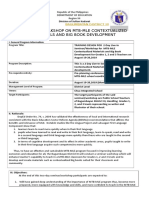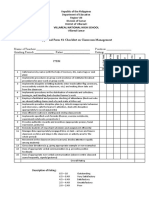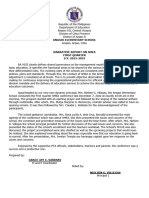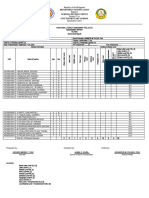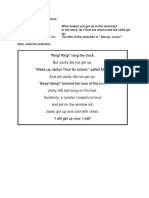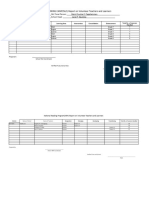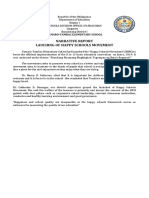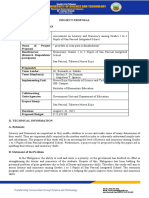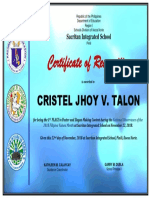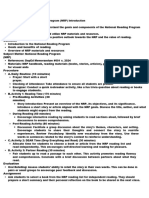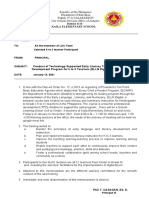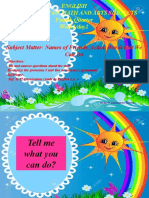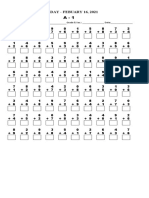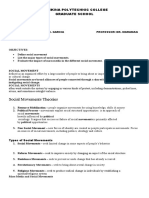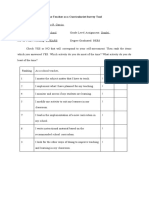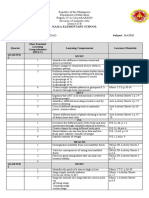100% found this document useful (1 vote)
487 views2 pagesChildren's Story Evaluation Guide
The document provides tables for evaluating children's stories. Table 1 lists questions about story elements like interests, humor, action, and characters. Table 2 lists possible benefits like language development and creativity. Table 3 is for self-assessment of understanding features of children's literature and analyzing a book.
Uploaded by
Mj GarciaCopyright
© © All Rights Reserved
We take content rights seriously. If you suspect this is your content, claim it here.
Available Formats
Download as DOCX, PDF, TXT or read online on Scribd
100% found this document useful (1 vote)
487 views2 pagesChildren's Story Evaluation Guide
The document provides tables for evaluating children's stories. Table 1 lists questions about story elements like interests, humor, action, and characters. Table 2 lists possible benefits like language development and creativity. Table 3 is for self-assessment of understanding features of children's literature and analyzing a book.
Uploaded by
Mj GarciaCopyright
© © All Rights Reserved
We take content rights seriously. If you suspect this is your content, claim it here.
Available Formats
Download as DOCX, PDF, TXT or read online on Scribd
/ 2


